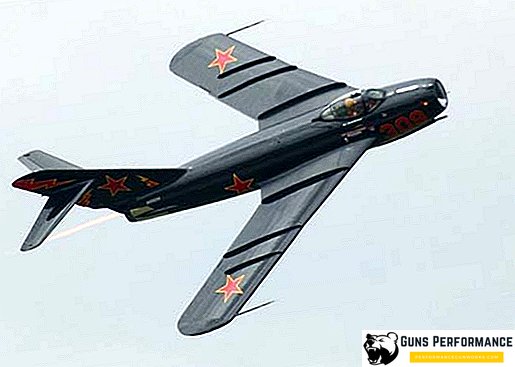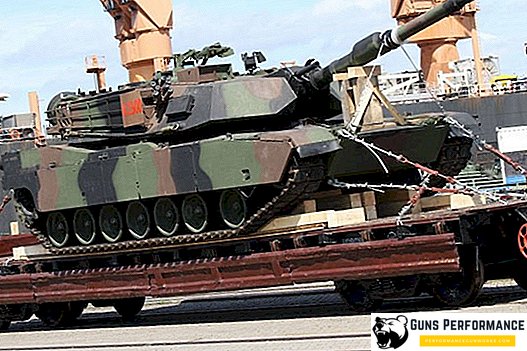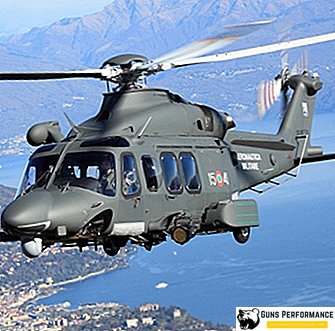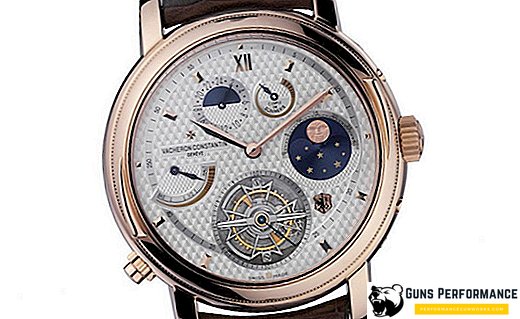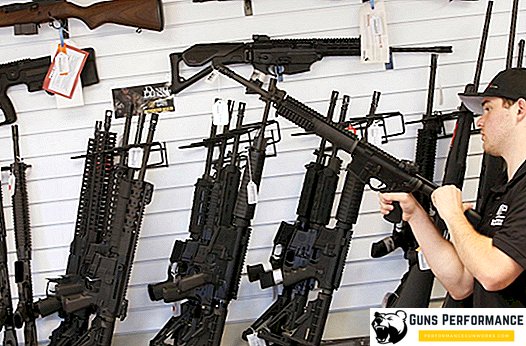BA-And also known as "Izhorsky Armored Car". It is the first model of a class of medium armored vehicles. It was produced in the interwar period and took part in the Great Patriotic War. The Ford-Timken chassis was the basis, then it was changed to GAZ-AAA. Production lasted a year and a half, during this time 109 copies were produced.
History of the creation of BA-I
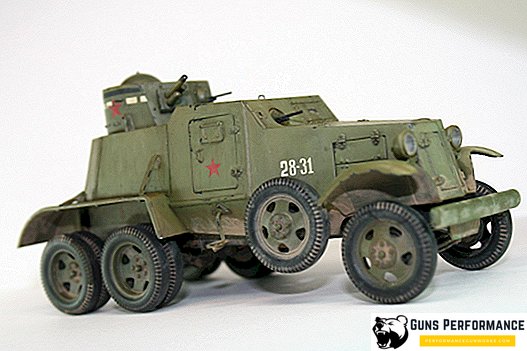
The creation was preceded by a decree issued on July 18, 1929 on the formation of tank-tractor and auto-armor detachments of the Red Army. The development was entrusted to a team led by Nikolai Dyrenkov. The specialists were tasked with inventing advanced and modern equipment in a short time.
The main requirement was the use of three axles (6x4). This design provided better throughput and made it possible to improve reservations and weapons. It was also dictated by the presence of three-axle armored vehicles in service with the United States and Britain.
In 1930, the USSR received a hundred "Morland". The army leadership proposed to use the equipment for the assembly of domestic products with its engine and transmission. However, in 1930, they entered into an agreement with the Timken company, which pledged to supply 1,000 vehicles made on the basis of a two-axle Ford-AA with the addition of a third axis. In the fall of the 31st year, all the necessary components arrived in the country, after which they began assembling at the plant in Nizhny Novgorod.
The undercarriage was left unchanged, but the simple structure of the body required serious improvement. At the end of 1931, engineers built a prototype with a hull made of unarmored steel. The tower was adopted from the MS-1 tank. After the first show, the military was satisfied, but noted several shortcomings. The driver landed with great difficulty, he had a limited overview of the terrain and hit his head on the ceiling while driving. The technique was sent for revision.
A few months later, experts prepared a revised BA-I project. He received a stepped roof, eliminating the above disadvantages. Such a constructional solution has become a distinctive feature of all subsequent Izhoros products of this class. Some improvements made in the device chassis, developed a unique design of the tower. A new prototype was assembled, internal tests were conducted, and then another demonstration was held to the military leadership. It remained satisfied corrected deficiencies.
In early August 1932, the car was sent to field testing. After them, the pros and cons of the new armored car were revealed, but this was already conditional, since the Red Army decided to launch a mass production. The armored car Izhora was ahead of two competitors (D-13 and FWV), which were also considered for armament.
Design BA-And

Specifications:
- Length - 4.8 m;
- Width - 2 m;
- Height - 2.4 m;
- Wheelbase - 3.4 m;
- Wheel formula - 6x4;
- Ground clearance - 25.4 cm;
- Engine displacement - 3.285 l;
- Power unit power - 40 horsepower;
- The maximum speed on asphalt - 75 km / h;
- Maximum speed on the ground - 29 km / h;
- Power reserve - 140 km.
Body and tower
The hull received a complex configuration. It was collected from armor plates, welding was used for the joint. Strength increased fastening armored corners on the welds. The roof received a stepped device. Above the driver, it was higher than in the combat compartment. This relieved the driver of discomfort and reduced the overall height of transport. The body was connected to the frame with ten brackets and bolted.
The engine compartment was in the front. Radiator protection made wedge-shaped. The air for cooling entered the engine compartment through two armored doors, the gap of which was regulated by the driver remotely. For the repair of the power plant provided two hatches in the side sheets.
Behind the engine was a control compartment designed for the driver and machine gunner. Their loading and unloading went through the side doors that opened towards the front of the car. The driver inspected the area through a hatch in the windshield. During a combat operation, it was closed with an armored lid with a viewing cut. Two more observation slots were in the side doors. To the thresholds attached footboards to facilitate embarkation and disembarkation. Ventilation functions served as a rectangular hatch in the ceiling. It was also used to monitor enemy aircraft and anti-aircraft fire.
In the central part was located the combat compartment. The door was in the upper right side of the board. On the sides there were viewing slots. The tower had a unique design, but the layout of the guns was borrowed from the BA-27 and MS-1. Its front sheets formed a wedge, which contributed to the improvement of bullet resistance. For landing commander tower equipped with a loop of canvas belt. The survey was carried out through three slots with armored valves (used in combat conditions) or through a sunroof in the roof. Parts and tools for the maintenance of weapons placed in two boxes located under the bottom.
Front and rear wheels protected the wings of armored steel. On the rear wings were boxes with spare parts and tools. Tracked chains could be stored there. Spare wheels fastened behind the front wings, forming an additional axis. Thanks to it, it was possible to improve permeability.
Armament

The main gun BA-I - a modified 37-mm tank gun system Hotchkiss. It was connected to PS-1, which did not reach mass production. Hotchkiss weapons received several modern solutions from PS-1 (for example, the trigger mechanism). The length of the barrel - 740 millimeters. The shutter is made by wedge type. The hydraulic compressor brake and spring knurler were the main components of the recoil system.
Axles are used to mount the gun. It is located in the right front sheet of the tower. The standard sight consisted of a front sight, aiming bar and rear sight. Shoulder emphasis carried vertical targeting. For horizontal guidance, the crew commander turned the entire tower. Secondary weapons - two 7.62-mm machine gun DT. One was installed on the left frontal leaf of the tower, the second - on the right frontal leaf of the body.
Motor and transmission

Under the hood placed Ford Model AA carburetor type. It had four cylinders providing a working volume of 3.285 liters. Cooled by a fluid-like system. Maximum power - 40 horsepower - was achieved at 2.2 thousand revolutions. Maximum torque - 165 Nm - was achieved at 1.2 thousand revolutions. The volume of the fuel tank was 40 or 45 liters (information differs in various documents).
The transmission was based on a single-disc clutch. The transmission of mechanical type had four forward and one back speeds. Its construction was supplemented with a demultiplier. Leading did two rear axle. Their device included bevel differentials and worm gears.
Electrician
The electrical equipment was based on a single-wire circuit. The voltage in the onboard network was 6 volts. Energy comes from the battery (80 Ah) and the generator (100 W). At night, the road was lit by two headlights, the device which does not provide for protective elements. The stop signal was installed on the rear left fender.
Series production of BA-I
Izhora plant refused to release BA-I because of the load of production lines with other equipment. Because of this, the Vyksa enterprise was chosen as the collector, which had the necessary equipment for the assembly of light and medium-sized armored vehicles.
The military overestimated the capabilities of the enterprise, setting 320 copies of the tasks for production by the end of the year, and for 1933 2,500 machines of various types. In fact, the results were much worse than planned due to the lack of equipment and labor in the right quantity. After the results of the 32nd year, the plan for the 33rd was reduced to 400 pieces. However, in Vyksa they could not even reach such a mark.
In 1933, the designers managed to collect 90 units of transport. At the beginning of the next year, another 19 cars were produced, after which the BAs were removed from production. The final result is 109 pieces.
Modifications

During the short period of the armored car’s existence, the specialists attempted to improve it to increase the traction and combat characteristics. First attempt - 1933. In the back of the wanted to add a post control. This idea was abandoned due to its small size.
In the second half of the 33rd year, the 37-mm recoilless anti-tank gun of Kurchevsky was tried as the main armament. Field tests have revealed many design flaws. Also after the shot a large smoke-dust cloud was formed, revealing the location of the car. From further development in this direction refused.
In the summer of 1938, it was decided to transfer the BA-I to the GAZ-AAA chassis. To do this, the chassis was shortened by 30 centimeters and strengthened the front axle. To increase the power reserve under the floor, an additional fuel tank with a volume of 38 liters was installed. Old tires replaced by GK. The weight of the upgraded version increased by 820 kilograms, which did not affect the traction quality.
In the first half of 1939, a new model (in some sources referred to as BAI-M) passed ground tests. After they graduated, the military leadership gave the order to re-equip the old BA-I with a new chassis. Refitting took place at the second and sixth repair bases in Bryansk. The question of increasing firepower remained open. After considering the various options, the engineers came to the conclusion that it would be better to leave the existing weapons.
One copy "pereobuli" in metal wheels for movement on rails. Further than one car, the project on the development of armored rubber did not advance, so it was closed.
Combat use of BA-I

In 1933, the delivery of the first BAs to the units of the Red Army began. Technique replaced outdated by the time the BA-27. Before the start of the Great Patriotic War, the machines were not used for combat. They were used in military parades.
As an allied aid, the USSR exported 7 cars to Spain during the civil war. The first combat test occurred in January 1937, when the battle of Madrid was underway. In the course of several military operations, the enemy destroyed all the vehicles of this type, which were in service with the Spanish Republicans.
The upgraded BAI-M also entered service in the Red Army, despite the recommendations of military experts to use cars for training purposes. January 1, 1941 in various departments there were 77 cars. In June of the same year, 22 of them from Transbaikalia were transferred to Belarus. They were in the 13th Panzer Division.
In the first weeks of World War II, most of the armored vehicles of the Red Army were destroyed by the enemy, including the BAI-M. By mid-August, whole armored cars remained in the amount of several units. Documentary evidence of the use of captured machines by the Third Reich is not. As of August 1942, there were 9 remaining in the Far East. Documentary information about their future is not.
What can be concluded?

At the time, BA-I turned out to be an innovative transport. The use of welding to join armored sheets was an absolute novelty, which was subsequently used throughout the world. The car had a high maneuverability and acceptable firepower. Despite its short history, it served faithfully in the first few months of the Great Patriotic War.


